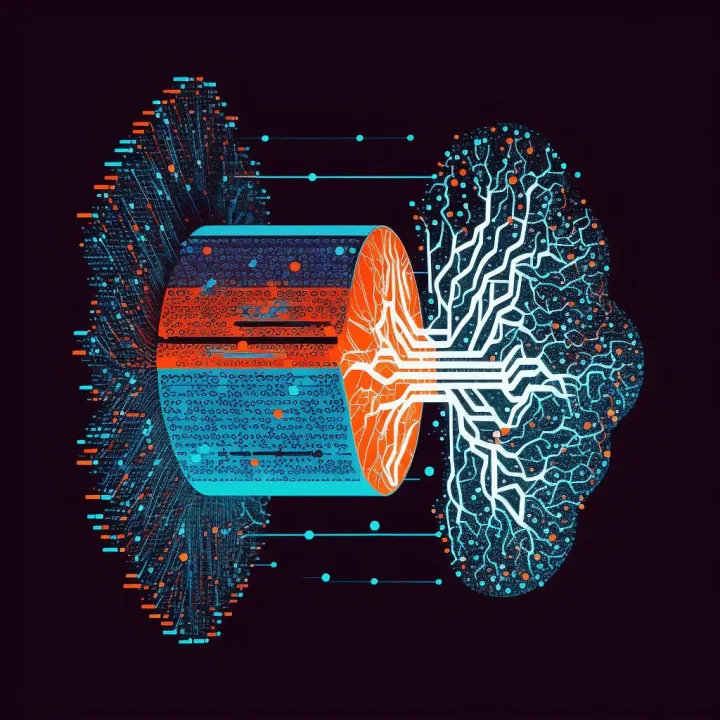Data-Driven and AI Architecture
Explore the impact of data and AI on the app building culture. Learn about the benefits of data-driven architecture and AI architecture in improving efficiency, data quality, and delivering personalized experiences. Stay ahead in the tech world with the latest advancements in data and AI.

The evolution of technology has led to a shift in how software applications are built and delivered. Today, the app-building culture is driven by data and artificial intelligence (AI) architectures. These architectures are designed to help developers create intelligent applications that can make decisions, learn from data, and provide personalized experiences to users.
We will explore the new data-driven and AI architecture driving today's app-building culture.
Data-Driven Architecture
Big data's rise has revolutionized how software applications are being built today. With the increasing amount of data being generated daily, it has become essential for applications to handle large amounts of data efficiently. In this situation, data-driven architecture comes in and rapidly changes the technology industry.
Data-driven architecture is a software design pattern that emphasizes the role of data in software design. It involves the creation of applications that can gather, store, process, and analyze large amounts of data to provide meaningful insights and predictions. These insights and predictions are then used to make intelligent decisions and provide personalized experiences to users.
Data-driven architecture is being used in various applications, from marketing to finance and healthcare. For example, a marketing application can use data-driven architecture to analyze customer behavior and provide personalized recommendations based on their preferences. In the finance industry, data-driven architecture is being used to detect fraud and make investment decisions. In healthcare, it is being used to track patient data and provide personalized treatment plans.
Data-driven and AI architecture trends are rapidly evolving to meet the demands of digital and AI transformations. Modern data architecture features automated data pipelines and integration processes on the cloud to ensure efficient data flow throughout the organization without compromising data quality. AI and automation are the top analytics trend in 2022 as it propels data-driven action. McKinsey predicts that data-driven enterprises will become the norm by 2025. Data and technology leaders are under pressure to create a modern data architecture that thoroughly fuels their company’s digital and AI transformations. Gartner has also identified top data and analytics trends for 2021.
Artificial Intelligence Architecture
Artificial intelligence (AI) is another technology driving the app-building culture. AI is a branch of computer science that develops intelligent machines that can perform tasks that usually require human intelligence, such as learning, problem-solving, and decision-making.
AI architecture is the design pattern used to build AI-powered applications. It involves the creation of applications that can process large amounts of data and use machine learning algorithms to make predictions and decisions. AI architecture also integrates natural language processing (NLP) and computer vision technologies to enable applications to understand and process human language and images.
One of the key benefits of AI architecture is that it enables applications to provide personalized experiences to users. For example, a chatbot built using AI architecture can deliver personalized customer support by understanding the context of a user's request and providing relevant responses.
The top data architecture trends for 2022 include automated data pipelines on the cloud to ensure efficient data flow throughout the organization without compromising data quality. The democratization of data access, AI-ready architecture, and the rise of the analytics engineer, data fabric, data catalog, DevOps, and cloud are also expected to continue to rise, mature, and dominate the 2022 data architecture landscape. Data fabric, which serves as an integrated layer fabric of data and connects processes for real-time analytics with data residing across distributed systems, is also a top strategic technology trend for 2022. Additionally, building a modern data architecture that thoroughly fuels a company's digital and AI transformations is a top priority for data and technology leaders.

What is data fabric and how does it work?
Data Fabric is a term used to describe a data architecture that is flexible, scalable, and easy to manage. It is designed to provide organizations with a unified view of their data, regardless of where it is stored or how it is structured.
Data Fabric creates a virtual layer over an organization's data sources, allowing data to be easily accessed, shared, and integrated. The virtual layer abstracts the underlying data sources. In addition, it provides a consistent data view, making it easier for data scientists, business analysts, and developers to work with the data.
Data Fabric uses a combination of technologies, including data integration, data warehousing, data management, and metadata management, to create a unified view of the data. It also includes tools for data discovery, quality, and governance, which help ensure that the data is accurate, consistent, and secure.
Data Fabric enables organizations to manage their data more effectively by providing a centralized view, improving data quality, and reducing data duplication. It also makes it easier for organizations to share data across different departments and systems, enabling better collaboration and decision-making.
Data Fabric is a flexible and scalable data architecture that provides organizations with a unified view of their data. It works by creating a virtual layer over an organization's data sources, providing a centralized view of the data, and enabling organizations to manage their data more effectively. Using Data Fabric, organizations can improve their data management and make better decisions based on their data.
Conclusion
The new data-driven and AI architecture is driving today's app-building culture by enabling developers to create intelligent applications that can handle large amounts of data, make predictions and decisions, and provide personalized experiences to users. These architectures are being used in various industries and are helping organizations improve their operations and provide better experiences to their customers.
ExterNetworks can help you help every step of the way in the data-driven and AI journey; let's talk to get started.





